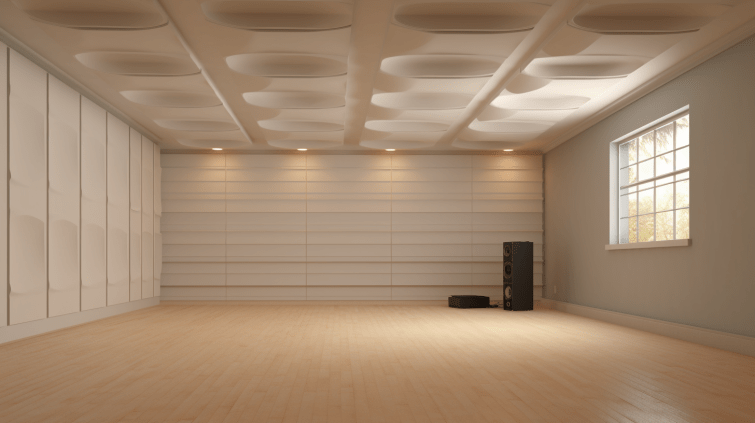Can Drywall be Used for Soundproofing
- Devlin Drywall

- Sep 24, 2023
- 3 min read
Drywall is a commonly used material in construction, known for its versatility and ease of installation. One aspect that is often overlooked is its potential for sound dampening. Drywall is readily available, relatively inexpensive, and easy to install, making it a practical choice for both residential and commercial applications.

Drywall can also be combined with other soundproofing techniques, such as insulation or resilient channels, to enhance its sound-dampening capabilities. It also provides a smooth and aesthetically pleasing finish, making it a versatile option for soundproofing various spaces.
How Does It Work?
To understand the concept of sound dampening, it is essential to grasp the nature of sound itself. When sound waves encounter a barrier, such as a wall, they can be reflected, absorbed, or transmitted. Sound dampening aims to minimize the transmission of sound waves through a barrier, thereby reducing the noise that reaches the other side.
Drywall, composed of gypsum plaster sandwiched between layers of paper, can contribute to sound dampening due to its density and mass. The thickness and number of layers of drywall used can affect its soundproofing capabilities. Thicker drywall or multiple layers can provide better sound insulation by increasing the mass of the barrier.
Types of Drywall for Sound Dampening
There are various types of drywalls that are specifically designed for sound-dampening purposes. By understanding the unique properties and benefits of each type, you can make an informed decision that suits your specific needs.
Green Glue Drywall
One popular option for sound dampening is the Green Glue drywall. This innovative product consists of two layers of drywall with a special damping compound sandwiched in between. The compound effectively absorbs sound vibrations, reducing noise transmission.
Soundproof Drywall
Another effective choice is soundproof drywall, which is specifically engineered to minimize sound transfer between rooms. It features a dense core material that absorbs sound waves, preventing them from traveling through the walls.
Resilient Channel Drywall
Resilient channel drywall is an excellent option for reducing impact noise, such as footsteps or vibrations. It consists of a metal channel that is attached to the studs, creating a gap between the drywall and the structure. This gap helps to isolate the drywall from the framing, minimizing sound transmission.
Mass Loaded Vinyl Drywall
Mass loaded vinyl (MLV) is a versatile material that can be added to existing drywall to enhance soundproofing. It is a dense, flexible sheet that can be easily installed between layers of drywall or attached directly to walls. MLV effectively blocks sound and is particularly useful for reducing low-frequency noise.
Double Layer Drywall
For maximum sound dampening, double layer drywall can be a great choice. This involves installing two layers of drywall with an air gap in between. The air gap acts as a buffer, absorbing sound waves and preventing them from passing through the walls.
Soundproof Insulation
In addition to choosing the right type of drywall, incorporating soundproof insulation can further enhance the acoustic performance of your walls. Insulation materials such as mineral wool or cellulose can be added to the wall cavities to absorb sound and improve overall soundproofing.
How to Get Soundproof Drywall Installed
It is necessary to thoroughly prepare the area where the installation will take place. Begin by removing any existing wall coverings, such as wallpaper or old drywall, and ensure that the surface is clean and free of debris. By taking the time to properly prepare the space, you can ensure a smooth and professional drywall installation.
Choosing the Right Drywall Materials
Selecting the appropriate drywall materials is a critical step in achieving a high-quality installation. There are various types of drywall available, each designed for specific applications. For example, moisture-resistant drywall is ideal for areas prone to humidity, such as bathrooms or basements.
Painting and Finishing Touches
Once the drywall installation and finishing processes are complete, it is time to add the final touches to your project. Begin by priming the walls with a high-quality primer, which will ensure proper adhesion and enhance the longevity of the paint. After the primer has dried, apply the desired paint color using a roller or a brush, ensuring even coverage.
Maintaining and Repairing Drywall
Proper maintenance and timely repairs are essential for preserving the integrity of your drywall installation. Regularly inspect the walls for any signs of damage, such as cracks or holes, and address them promptly.
Professional Drywall Installation
Devlin Drywall Contractors possess the expertise and experience necessary to ensure a flawless installation, saving you time and effort. We have access to specialized tools and equipment, allowing for greater precision and efficiency. Professional drywall services often offer warranties, providing peace of mind and protection against potential issues.




Comentarios